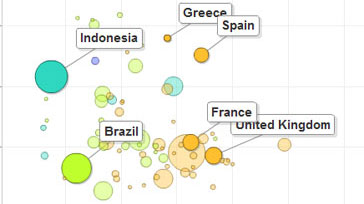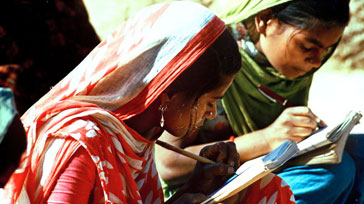Key Indicators of the Labour Market 2015
Workers are becoming more educated, although not always finding suitable jobs
The new edition of the ILO online reference tool analyses the link between education and access to the labour market.

According to the latest edition of the KILM, which is part of the broader ILO statistical database (ILOSTAT), all but two of 64 countries with available data have registered an increase in the share of the labour force with a tertiary education over the past 15 years. The biggest increases were seen in Canada, Luxembourg and Russia.
At the same time, there has been a drop in the share of labour market participants with only a primary-level education or less.

However, this does not mean that workers with tertiary-level education automatically have a better chance of finding a job. While they are less likely to be unemployed in most high-income economies, tertiary graduates in low- and lower-middle-income economies are actually more likely to be among the unemployed than workers with lower educational levels.
“This reflects a mismatch between skilled persons and the number of available jobs matching their competencies and expectations, and unless addressed may work to put a limit on economic growth and development,” says Rosina Gammarano, from the ILO Department of Statistics.
Youth employment and gender gap

The KILM finds that the countries where the number of NEETs has increased in recent years are all high-income economies that were badly hit by the global financial crisis, such as Cyprus, Ireland, Italy, Greece and Spain.
On the other hand, the countries in which the share of NEETs decreased the most are either upper-middle-income economies, like Bulgaria, or low-income countries, like Cambodia.
There is also a persistent gender gap in the majority of developing countries with available data, with the percentage of young women NEETs reaching more than 40 per cent in Egypt, for example, compared to 17.3 per cent for young men.
The current edition includes four indicators that directly examine the link between education and labour markets.
The KILM is a multi-functional research tool of the ILO produced by its Department of Statistics, consisting of country-level data on 17 key indicators of the labour market from 1980 to the latest available year (See “Other key findings”). It was first released in 1999 and it is continuously reviewed and enhanced.
“This edition of the KILM – part of ILOSTAT – is particularly relevant now as national statisticians and the international organizations are in the process of establishing a statistical system to monitor the recently adopted Sustainable Development Goals. Many KILM indicators are strong candidates to become part of the set of indicators that will be used to measure the SDGs. Enhancing them will surely help to provide reliable benchmarks to monitor progress,” says Rafael Diez de Medina, Director of the ILO Department of Statistics.
Other key KILM findings
|